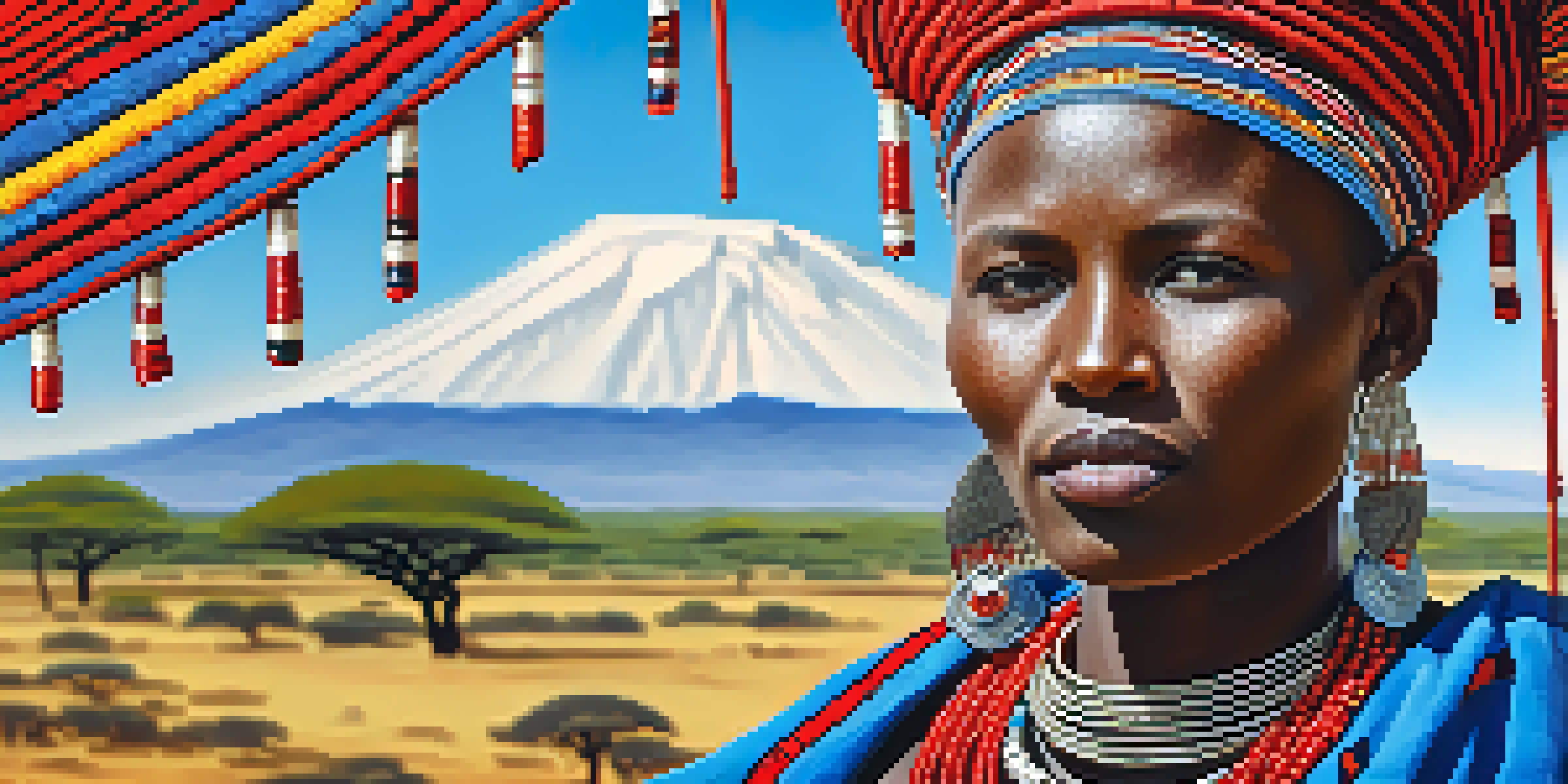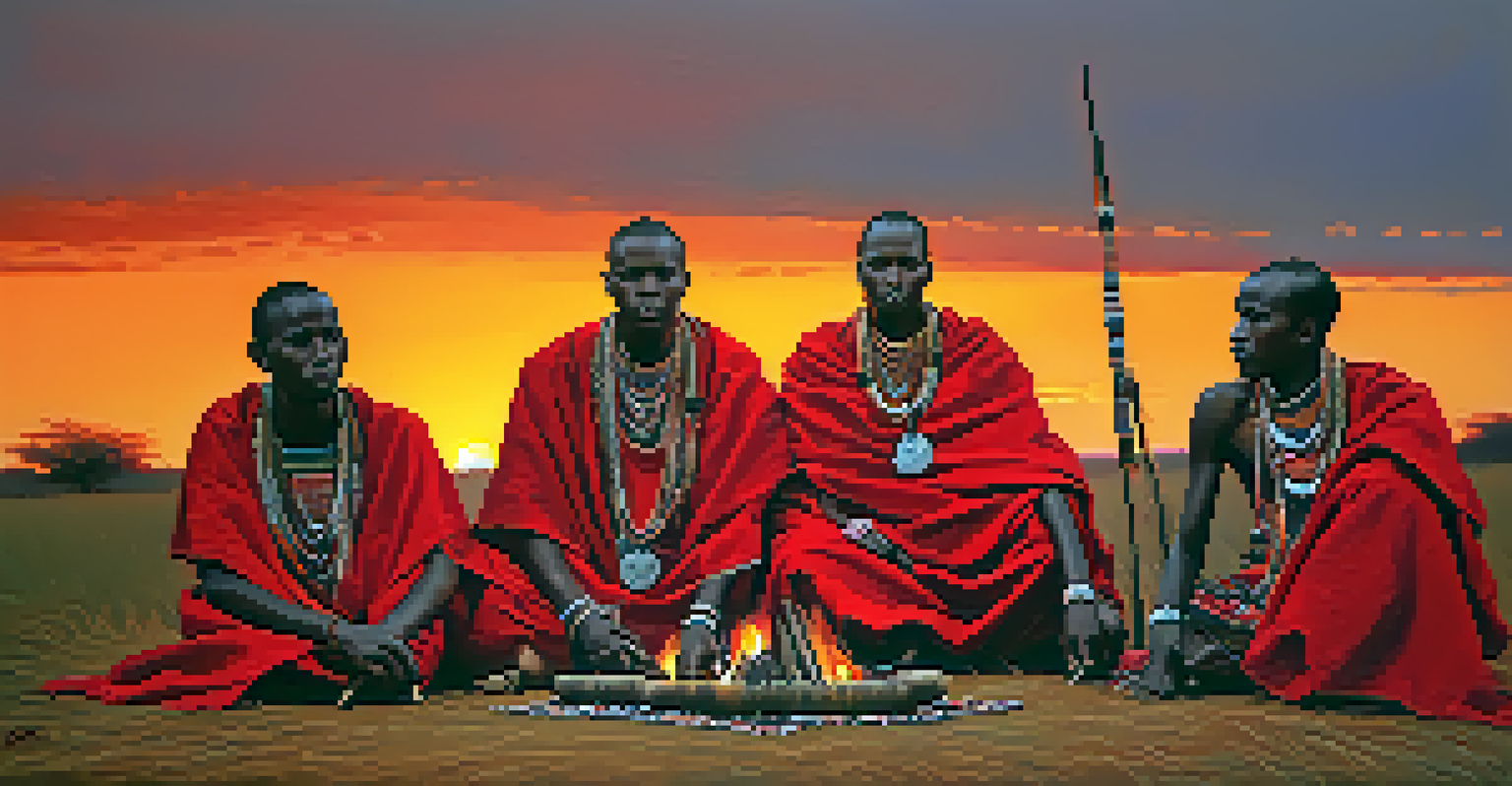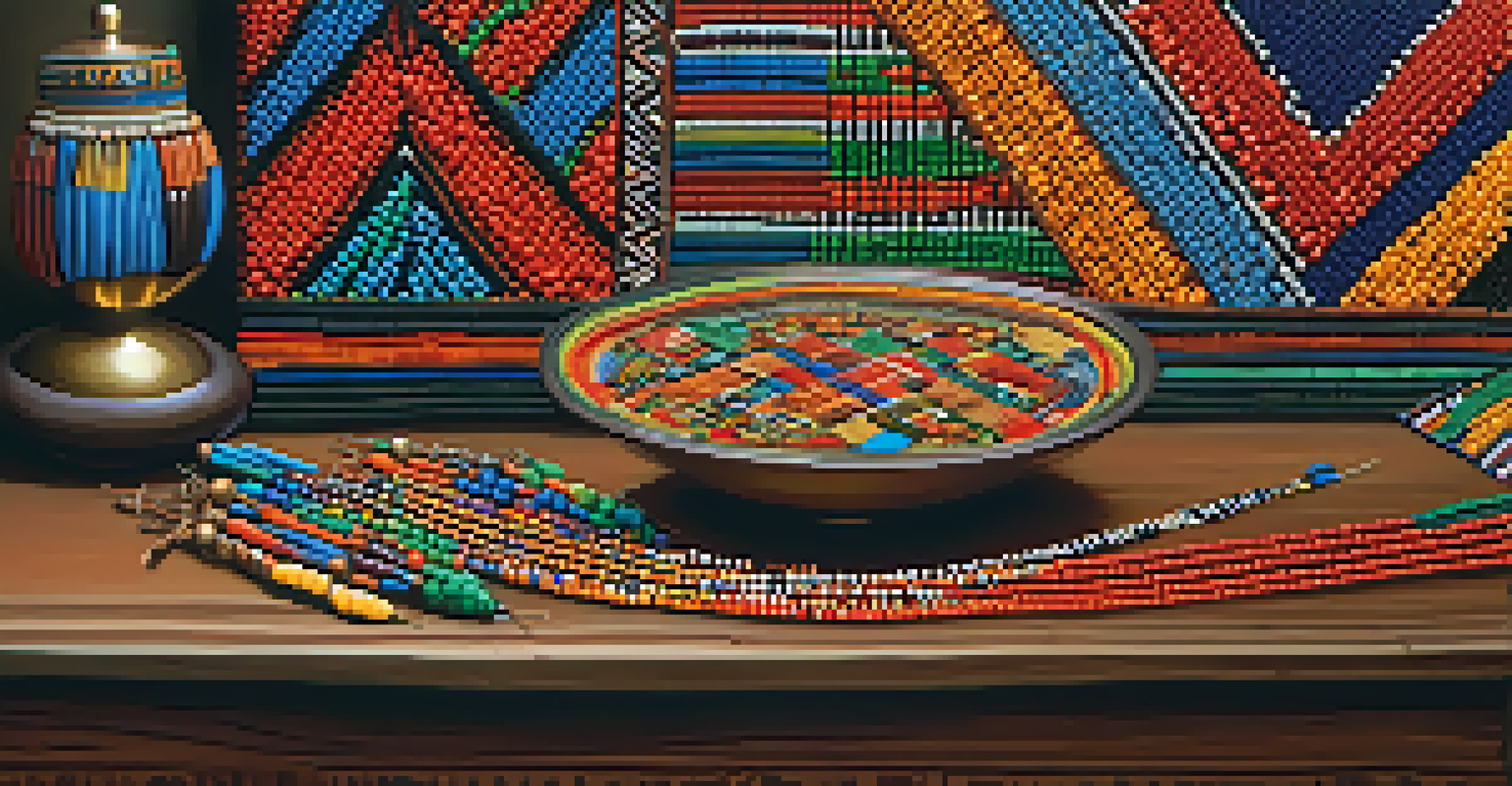The Evolution of Traditional Maasai Attire in East Africa

Understanding Maasai Culture and Its Significance
The Maasai people, known for their vibrant culture, primarily inhabit Kenya and Tanzania. Their traditional attire is not just clothing; it is a reflection of their identity, social status, and cultural heritage. The attire showcases their deep connection to the land and their pastoral lifestyle, embodying their values and beliefs.
Culture is the widening of the mind and of the spirit.
For the Maasai, clothing serves various purposes beyond mere protection from the elements. It communicates individual and communal identity, with specific colors and patterns representing different meanings. The attire is often used in ceremonies, signaling important life events such as coming of age, marriage, and mourning.
As we delve into the evolution of Maasai attire, it's essential to appreciate how these garments have adapted over time while maintaining their cultural significance. This evolution reflects broader changes in society, economy, and the environment, demonstrating the resilience and adaptability of the Maasai people.
Traditional Elements of Maasai Attire
Traditional Maasai attire primarily consists of shúkà, a red-checked or solid-color cloth, wrapped around the body. This bold use of color is not just aesthetic; it also serves practical purposes, as the bright hues are said to scare off wild animals. The shúkà is often paired with intricate beadwork, which highlights the wearer’s social status and personal achievements.

The beadwork, created using vibrant beads in various colors, is a vital aspect of Maasai identity. Each piece tells a story, often associated with significant life events or clan affiliations. For instance, different patterns may signify whether a woman is unmarried or married, providing a visual shorthand for social status.
Cultural Significance of Maasai Attire
Maasai clothing reflects their identity, social status, and cultural heritage, serving as a visual shorthand for communal values.
Footwear also plays a significant role in traditional attire, with many Maasai opting for sandals made from cowhide. This choice not only showcases their resourcefulness but also maintains a connection to their pastoral lifestyle. These elements together create a distinctive look that is both functional and expressive.
Influence of Colonialism on Maasai Attire
Colonialism brought profound changes to East Africa, and the Maasai were not immune to its effects. The introduction of Western clothing styles altered traditional attire, as some Maasai began to adopt European garments. This shift often reflected a desire to assimilate into colonial society, but it also led to tensions within the community about cultural identity.
Tradition is not the worship of ashes, but the preservation of fire.
As Western clothing became more accessible, the younger generations were influenced by global fashion trends, leading to a blend of traditional and modern styles. While some embraced these changes, others sought to preserve their cultural heritage, leading to a fascinating interplay between old and new.
This evolution was not merely about clothing; it represented a broader struggle for identity amid changing social and political landscapes. The Maasai's response to colonialism illustrates their resilience and ability to adapt while striving to maintain their cultural roots.
Modern Influences on Maasai Attire
Today, Maasai attire continues to evolve, influenced by globalization and modern fashion. Many Maasai artisans are creating contemporary designs that incorporate traditional elements, appealing to both local and international markets. This adaptation allows them to sustain their cultural practices while also embracing new opportunities.
Social media has played a pivotal role in this transformation, as young Maasai share their fashion choices online, blending traditional attire with modern styles. This visibility fosters a renewed interest in Maasai culture and encourages pride in their heritage, particularly among the youth.
Adapting to Modern Influences
The Maasai continue to evolve their attire by blending traditional elements with contemporary designs, influenced by globalization and tourism.
Moreover, tourism has significantly impacted traditional attire, as many visitors seek authentic Maasai experiences. This demand has led to the commercialization of traditional clothing, with artisans crafting garments that cater to tourists while still reflecting their cultural significance.
Role of Beadwork in Modern Maasai Attire
Beadwork remains a cornerstone of Maasai attire, transcending generations. In modern times, it has become more than just decorative; it represents cultural pride and economic empowerment. Many Maasai women have established cooperatives to produce and sell beadwork, enabling them to gain financial independence.
The intricate designs of beadwork tell stories of ancestry, community, and personal milestones. Each piece created today often blends traditional techniques with contemporary aesthetics, appealing to a broader audience. This fusion helps preserve cultural heritage while also adapting to modern tastes.
Through these efforts, beadwork serves as a vital link between the past and present, grounding the Maasai in their rich history while supporting their future. It illustrates how tradition can evolve without losing its essence, demonstrating the resilience and creativity of the Maasai people.
The Impact of Climate Change on Traditional Attire
Climate change poses significant challenges for the Maasai, impacting their pastoral lifestyle and, consequently, their traditional attire. As droughts become more frequent, the availability of materials for clothing, such as animal hides and natural dyes, is affected. This scarcity forces the community to adapt, often leading to changes in how they dress.
In response, many Maasai are finding innovative ways to utilize alternative materials and techniques. This adaptability showcases their resilience, as they strive to maintain their cultural identity despite external pressures. The garments produced today reflect not only their heritage but also their commitment to sustainability.
Preserving Tradition Amid Change
Efforts to educate younger generations about the significance of traditional attire are vital for maintaining Maasai cultural identity in a changing world.
These adaptations also highlight the intersection of traditional practices and environmental challenges. As the Maasai navigate these changes, their attire continues to serve as a powerful symbol of their enduring culture and dedication to preserving their way of life.
Preserving Maasai Attire for Future Generations
Preserving traditional Maasai attire is crucial for maintaining cultural identity in an ever-changing world. Efforts are underway to educate younger generations about the significance of their clothing, ensuring that they understand its history and the stories it tells. This connection to their roots is vital for fostering pride in their heritage.
Community initiatives, workshops, and cultural festivals play a significant role in showcasing traditional attire and its evolution. These events provide opportunities for the Maasai to share their stories, celebrate their culture, and pass on their knowledge and skills to the youth.

By embracing both tradition and innovation, the Maasai can ensure that their attire remains relevant while honoring their past. This balance is essential for the survival of their cultural identity, allowing future generations to appreciate the rich tapestry of their heritage.